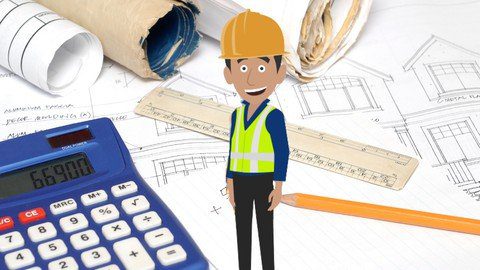Introduction
It takes more than just blueprints and permits to plan a construction project, whether it is residential, commercial, or industrial. Budgeting, keeping track of spending, and guaranteeing financial success all depend on a thorough cost breakdown. To help builders, contractors, homeowners, and investors in the USA understand every dollar spent from beginning to end, we offer a thorough cost breakdown of construction projects in this guide, complete with real-world examples.

What Is a Construction Project Cost Breakdown?
A thorough report that classifies all of the expenses related to a build is called a construction project cost breakdown. Materials, labour, equipment, permits, overhead, and unforeseen expenses are all covered. In addition to ensuring transparency, this breakdown increases planning accuracy, streamlines bidding, and helps prevent budget overruns.
Major Categories of Construction Costs
Let’s dissect the main cost categories to fully comprehend how money moves through a construction project:
1. Pre-Construction Costs
The following costs are incurred before the start of actual construction:
- Land Purchase: The price of buying land, including closing costs and legal fees.
- A feasibility study looks at the project’s viability from a technical and financial standpoint.
- Mapping the land to identify boundaries and elevations is known as site surveying.
- Assessing the ground’s ability to support structural loads is known as soil testing.
- Fees for creating MEP designs and blueprints are included in architectural and engineering design.
- Legal construction approvals are subject to permits and regulatory fees levied by the local government.
For instance, pre-construction expenses for a $500,000 residential home may vary from $25,000 to $50,000.
2. Direct Construction Costs
These are costs that are directly tied to the physical structure and are often the largest portion of your budget.
A. Site Preparation
- Clearing and grading land
- Excavation and earthwork
- Temporary utilities setup
B. Foundation
- Concrete materials
- Formwork and reinforcement
- Labor and machinery
C. Framing
- Lumber or steel
- Fasteners, nails, and connectors
- Crane rental (for steel or prefab components)
D. Roofing
- Trusses or rafters
- Roofing material (shingles, tiles, metal)
- Underlayment and insulation
E. Exterior Work
- Siding or brickwork
- Windows and doors
- Exterior painting and finishes
F. Interior Finishes
- Drywall installation
- Flooring (tile, wood, carpet)
- Paint, cabinetry, countertops
G. MEP (Mechanical, Electrical, Plumbing)
- HVAC systems
- Plumbing fixtures and piping
- Electrical wiring and lighting
For instance, direct construction expenses could account for 60–70% of the total budget for a commercial office project.
3. Indirect Construction Costs
These are essential, but do not directly contribute to building the structure:
- Project Management – Site supervision, coordination, and administration.
- Insurance – Builder’s risk insurance, general liability.
- Safety Equipment – PPE, fencing, warning signage.
- Temporary Facilities – Site offices, storage containers, portable toilets.
- Utilities During Construction – Water, power, and internet for the crew.
For instance, indirect expenses typically account for 10–15% of the overall construction budget.
4. Equipment and Tools
Projects often require specialized tools and machinery. These can be owned or rented:
- Excavators, bulldozers, and skid steers
- Concrete mixers
- Cranes and lifts
- Scaffolding
From $100 per day for small tools to $2,000 per day for cranes, rental prices can vary greatly.
5. Labor Costs
Labor is a major expense that varies based on skill level, location, and union regulations:
- Skilled Labor – Carpenters, electricians, plumbers, masons
- Unskilled Labor – General helpers, site cleaners
- Subcontractors – Specialized trades hired for specific tasks
Labor can range from $40–$100/hour depending on trade and region.
6. Material Costs
Material selection greatly affects both aesthetics and budget:
- Structural Materials – Concrete, rebar, lumber, steel
- Finishing Materials – Tile, wood flooring, paint, hardware
- MEP Materials – Pipes, wires, fixtures, switches
Material prices are often volatile due to market supply chains. It’s smart to allow a buffer for fluctuation.
7. Contingency Allowance
This buffer accounts for unexpected costs or changes in scope:
- Design revisions
- Hidden site conditions
- Price increases or shortages
The industry standard is to allocate 5–10% of the total project cost.
8. Overhead and Profit
Contractors typically include a markup for operating expenses and profit margin:
- Office expenses
- Salaries of non-site staff
- Marketing and business development
Overhead & profit margins are often 10–20% depending on competition and risk.
Sample Construction Cost Breakdown Table
Cost Category | Estimated % | Estimated Cost (on $500,000 Project) |
Pre-Construction | 10% | $50,000 |
Direct Construction | 60% | $300,000 |
Indirect Construction | 10% | $50,000 |
Equipment & Tools | 5% | $25,000 |
Labor | 10% | $50,000 |
Contingency | 5% | $25,000 |
Total | 100% | $500,000 |
Tips for Managing Construction Costs Effectively
- To be clear, break down each category into line items.
- Real-time budget tracking is easier with tools like Buildertrend, ProEst, or PlanSwift.
- Get several bids and look at more than just the price. Also, look at the timeline and quality.
- Keep track of your spending every week. Change your budget when the price of materials goes up or there are delays.
- Don’t underestimate risk. Always be ready for extra costs.
Conclusion: Why a Cost Breakdown Is Essential
A detailed cost breakdown is the most important part of any construction project that goes well. It helps people make better decisions, manage projects better, and stick to their budgets. Whether you’re building a home or managing a multi-million-dollar development, thorough financial planning is what holds everything together.
If you’re planning a project, All Bids Estimates can help you with budgeting, bid preparation, or cost estimation with our expert-level insights and tools tailored to your needs.
